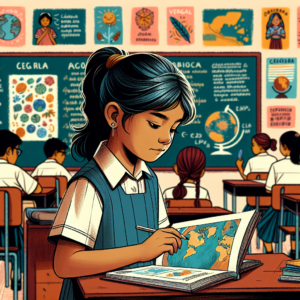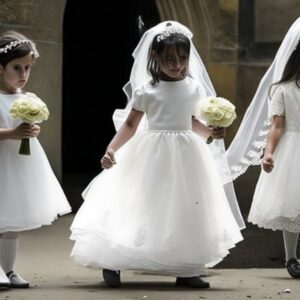#ChildMarriage #EndChildMarriage
Exposing the Overlooked: Child Marriage in Canada
The phenomenon of child marriage often evokes thoughts of young individuals being forced into matrimony in remote, less developed regions of the world. Yet, this issue is not confined to any one location; it is a global concern that crosses borders, cultures, and economic statuses. Astonishingly, Canada—a nation praised for its commitment to human rights and progressive ideals—is also grappling with the reality of child marriage. This article aims to uncover the obscured issue of child marriage in Canada, delving into its root causes, detrimental effects, and the pressing need for measures to safeguard the rights and futures of affected youths.
The Hidden Extent of Child Marriage in Canada
Child marriage within Canada is an issue that remains largely under the radar, partly due to its existence in a legal gray zone and its ties to cultural traditions. Despite its low profile, the statistics reveal a troubling picture of the widespread nature of this issue and the silent crisis happening within Canadian borders. Research indicates that annually, thousands of minors are married in Canada, with a notable majority being young girls wed to older males. These marriages frequently go unreported, concealing the true scale of the problem from public view.
Legal Ambiguities and Loopholes
In Canada, the legal marriageable age is 18, but with parental consent or under special conditions, individuals as young as 16 can marry. This legal ambiguity serves as a conduit for child marriage, enabling its continuation under the pretense of cultural or religious customs. The vague and lenient enforcement of marriage laws further aggravates the situation, leaving minors at risk of exploitation and mistreatment.
Cultural and Socioeconomic Drivers
The practice of child marriage in Canada cannot be pinned down to a single cause; rather, it is the outcome of a complex mix of cultural, socioeconomic, and legal elements. In certain communities, the tradition of early marriage spans generations, often tied to cultural or religious values. Poverty and a lack of education also significantly contribute, with families viewing marriage as a strategy to secure their child’s future or to relieve economic pressures.
Effects on Young Individuals
The repercussions of child marriage are deep and wide-ranging, impacting every facet of a young person’s life. Education frequently becomes the first sacrifice, with numerous child brides leaving school to manage household duties or because of pregnancy. The health hazards linked to early pregnancy and childbirth are well-known, presenting serious risks to both the mother and child. Child marriage can also lead to isolation, reducing social interactions and access to support networks, which can worsen mental health problems.
Opposition to Child Marriage
The movement against child marriage has attracted backing from various sectors, including human rights advocates, non-governmental organizations, and survivors who have courageously recounted their experiences. Prominent authors and public figures have also joined this cause, highlighting the necessity of safeguarding the rights and prospects of young people.
Malala Yousafzai, a Nobel Peace Prize winner and champion for girls’ education, once stated, “We cannot succeed when half of us are held back.” Her statement powerfully connects with the issue of child marriage, illustrating how such practices not only infringe on individual rights but also impede societal advancement.
Likewise, acclaimed writer and feminist Chimamanda Ngozi Adichie has extensively addressed the importance of empowering girls and women. Her assertion, “Culture does not make people. People make culture,” challenges societal norms that sustain harmful practices like child marriage, urging a reassessment of our cherished values.
Strategies for Change
Tackling child marriage in Canada demands a comprehensive strategy that encompasses legal reforms, educational initiatives, and community involvement. A crucial initial step is to tighten the legal framework to close loopholes that facilitate child marriage, which includes setting the minimum marriageable age at 18 without exceptions and enhancing law enforcement.
Education is key in fighting child marriage, through both raising awareness of its negative impacts and empowering young people with the knowledge and skills to imagine a life beyond matrimony. Engaging with communities is equally important, as transforming deeply rooted cultural and societal standards is a collective endeavor that necessitates dialogue, empathy, and support from within.
Conclusion
Child marriage in Canada is an obscured reality, reminding us that the battle for human rights and gender equality is ongoing. It is a multifaceted issue that calls for awareness, understanding, and action from every segment of society. Safeguarding the rights and futures of young people is not merely an ethical obligation but a communal duty we all share.
Echoing human rights advocate Nada Al-Ahdal, “Protecting human rights is not an option, but a responsibility of us all” @nadalahdal. By answering this call to action, we can strive for a future where every child is allowed to live, learn, and dream, free from the burden of child marriage.
#NadaFoundation
#ChildMarriage
#Nada_Foundation
#NadaAlahdal
#Unveiling #Hidden #Reality #Child #Marriage #Canada
unveiling-the-hidden-reality-child-marriage-in-canada





















